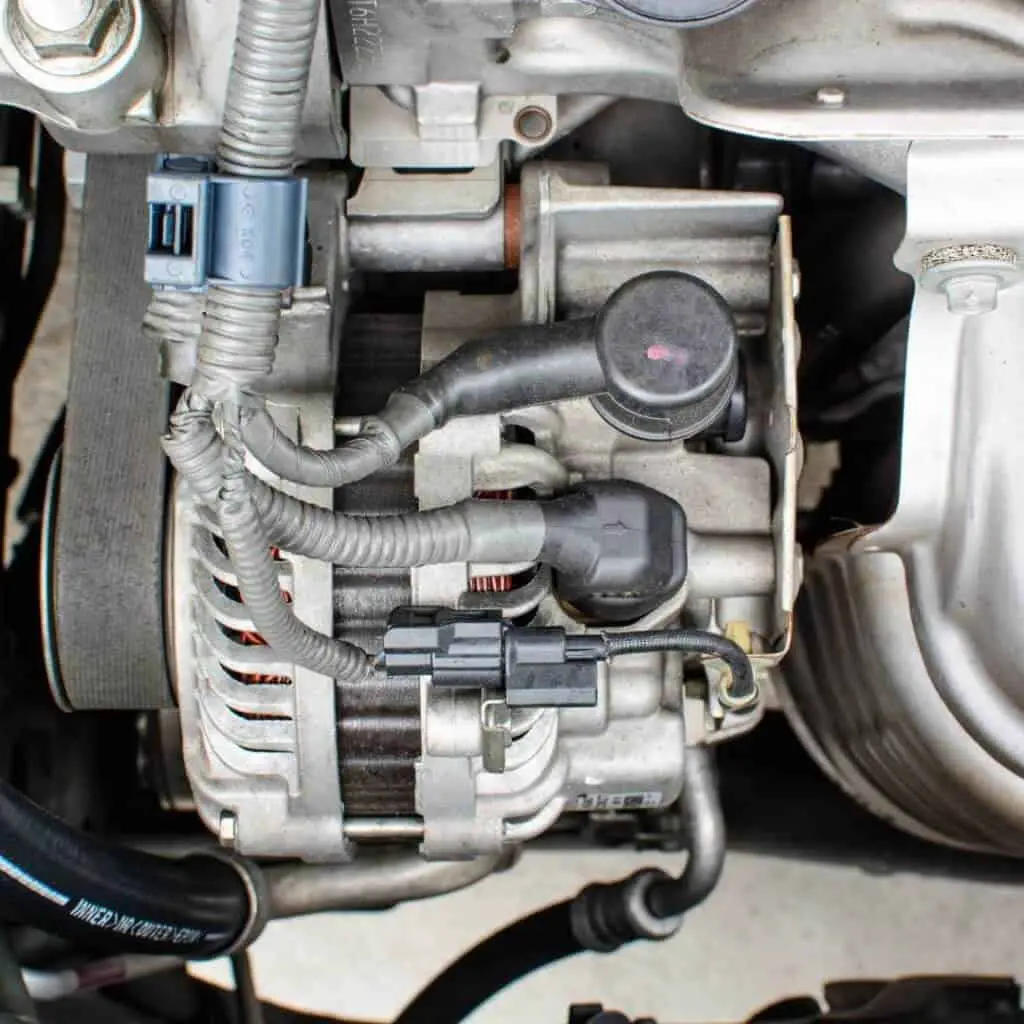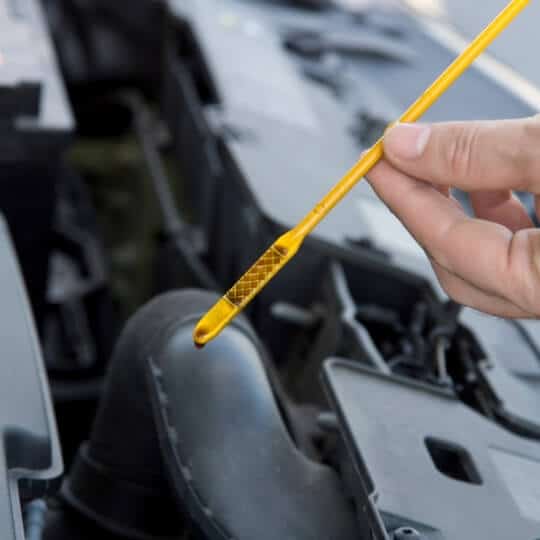This may sound like a solid idea, but can you jumpstart a car with a bad alternator?
The deadliest enemy of a driver is a dead battery, but a failing alternator can be far worse. Because of the alternator, your car’s battery is kept charged. It’s necessary for everything the car needs to perform properly.
However, if the alternator fails, you can still kickstart the vehicle and get to a technician. You will need a replace your broken alternator as soon as possible.
Can you jumpstart a car with a bad alternator?

You can actually jumpstart a car having a broken alternator, and it will keep running for a while, as long as you have a good battery and a good starter box.
The reason for this is that if the alternator fails to produce the required voltage, the car will run solely on the battery.
This isn’t suggested by any means, but it may be essential if you only need to make a short drive. The purpose of jumpstarting is to get a dead battery to start; therefore, if you’re jumpstarting, your battery is probably dead.
Related: Dead Car Battery Tricks
A jumpstarted battery will run flat faster than one that has been properly charged since it will not receive assistance from the alternator [1].
Of course, this can be hastened if you have a large electrical load, such as heating or phone charging. The worst case scenario is that you left your headlights turned on.
Risks of driving with a bad alternator

Suppose you are jumpstarting appropriately. In that case, there should be no damage to the donor or recipient’s automobile. It is typically safe to do so. However, driving a car with a damaged alternator is dangerous, particularly for a newer car.
Everything in your automobile is powered by the alternator, including the lights, air conditioning, radio, etc. When you start the engine for the first time, it also has to charge the battery back up to full power.
Consequently, most alternators for 12-volt systems are designed to produce around 14.5 volts. In some cases, many Asian automobiles may generate substantially greater voltages, up to 15 volts.
As you might expect, the alternator is critical because practically all automobile systems rely on it, particularly if you have a modern car. Unfortunately, as a result, newer cars are more susceptible to component failure because they do not work well with lower voltages, which can include:
- Electric Water Pumps: These pumps are in charge of pumping water from the radiator and transferring it through the motor to keep the vehicle running smoothly. If your water pump malfunctions and the car continues to run, the engine will overheat, resulting in catastrophic, permanent engine damage.
- Power Steering: In some automobiles, the steering is electrically powered. Without the boost supplied by the power steering system, steering might be difficult, putting you at risk because it will be more difficult to maneuver or steer fast.[2]
- Fuel Pump: Even in older cars, the fuel pump is almost certainly electronic and is necessary for pushing fuel to the engine. If the fuel pump fails to deliver fuel to the engine, it will shut down. Sometimes, significant damage may occur just before your car shuts down. This can be dangerous in and of itself, as the automobile may instantly shut off after you’ve just jumpstarted it. If this occurs or does not, it is best not to push your luck and pull over slowly and call a tow truck.
How long will a car run with a bad alternator?

There is no clear answer to this question. There are way too many variables that influence how long you can drive with a damaged alternator, including alternator condition, battery, condition, electrical load (AC, Headlights, etc.), vehicle age, and vehicle Speed.
A rough estimate would be 20 minutes or 13-15 miles, which can be increased if you drive gently and maintain your RPM low. If your battery is dead or you’ve just jumpstarted your car, don’t expect it to last more than 10 minutes or 7-10 miles. [source]?add more text here
Signs of a bad alternator

- Dim or very bright lighting
When an alternator fails, your electronic equipment’s current becomes erratic. Under- or over-performing electronics, like headlamps that are either too dim or excessively bright, is a common example. You can also notice flickering lights or lights that go from bright to faint and back again.
- Dead Battery
A dead battery is sometimes merely a dead battery – it’s come to the end of useful life after prolonged usage — or you may have left the headlights on all night by accident. On the other hand, a dead battery could indicate a problem with your alternator.
While the engine is running, a defective alternator will not adequately charge the battery, causing the charge to drop faster than usual. Jumpstarting the car is one approach to see if the problem is with the battery or the alternator.
If you jumpstart the automobile and it continues to run, the battery may need to be replaced. Likewise, if you jumpstart your car and it dies soon after, it’s possible that your alternator isn’t supplying adequate power to the battery. [3]
- Slow or Malfunctioning components
Slow or non-functioning components are generally the result of an alternator that isn’t giving sufficient power to the car’s electronics. For example, you may have an alternator issue if your windows take longer than normal to roll up or down, if your seat warmers feel “off,” or if the tachometer and other instruments begin to go haywire.
If the alternator isn’t generating enough electricity, many modern vehicles have a priority list of equipment built into the car that informs the onboard computer where to cut power first.
That way, if your alternator fails, you won’t lose power to your radio (or other non-essential devices) before you lose power to your headlights.
- Frequent Stalling or Trouble Starting
If you’re having difficulties starting your car, it’s possible that your alternator isn’t charging the battery. Unfortunately, this means that instead of the engine’s purr, you’ll hear a clicking sound when you twist the key in the ignition. [4]
If your car repeatedly stalls while driving, though, it could indicate that the spark plugs aren’t receiving enough electricity from the dynamo to keep the engine going.
- Whining or growling noises
Cars emit a variety of strange noises, some of which are harmless, while others may signify major mechanical issues. For example, you may have alternator difficulties if you hear rumbling or whining noises from under the hood, which should be looked up by a professional as soon as possible.
When the belt responsible for turning the alternator’s pulley gets misaligned or scrapes against the side of the pulley, it makes a growling or whining sound. This sound can also be heard if the rotor shaft’s bearings are worn out.
- Burning Rubber or Wires Smell
A burning wire or rubber odor could signal that your alternator’s parts are beginning to wear out. Because the alternator’s drive belt is constantly under strain and friction — and because it’s so close to the hot engine — it can wear out and generate an unpleasant burning rubber odor over time [5].
Likewise, if the alternator is overworked or has frayed or destroyed wires, you may detect a burning stench similar to that of an electrical fire.
An overloaded alternator tries to pump too much current down its wires, which causes them to overheat and become dangerously hot. Damaged wires also generate resistance to electricity flow, leading to the wires heating up and emitting an unpleasant odor.
- Battery Warning Light on Dash
When the battery warning light illuminates the dashboard, it’s often misinterpreted as a problem with the battery. On the other hand, the battery warning light warns that there may be a problem with your car’s larger electrical system, including the alternator.[6]
Alternators are made to operate at a specified voltage, usually between 13 and 14.5 volts. Therefore, your alternator’s voltage may drop below capacity if it fails, prompting the battery warning light to illuminate on your dashboard. Similarly, the battery light might appear if it exceeds its voltage limit based on how much strain the alternator is under.
The battery warning light may flicker on and off based on the electrical demand from your car’s peripherals (headlamps, wipers, radio, etc.) when the alternator varies in and out of its designed voltage capacity.
Although this may appear like a minor inconvenience, it’s preferable to have your car inspected for an alternator than to be stranded on the side of the road.
Can a bad alternator cause loss of power?

Your automobile will gradually lose power if the issue is a bad alternator. You’ll be traveling along the road when your lights dim, your electricity goes out, and you die. All the electrical systems essential to keep an automobile running stop working when the alternator fails.
If your battery is the issue, you’ll most likely only have difficulties starting your automobile because it is the battery’s primary job. It’s also possible that your lights are dim.
Read Also: Bad Alternator vs Bad Battery
Conclusion
As can be seen, there are various methods for starting a car with a discharged or faulty battery. However, the key is whether that automobile is safe to drive; check the dashboard after starting the engine and, if there are no errors or warnings, go to the repair shop.
If you’re using automobile jumper cables, keep in mind that connecting two cars for an extended time can overwhelm the alternator and charge controller of the vehicle with a decent battery – keep a watch on its dashboard. Stay safe no matter what you do in such a situation; after all, it is your responsibility.




